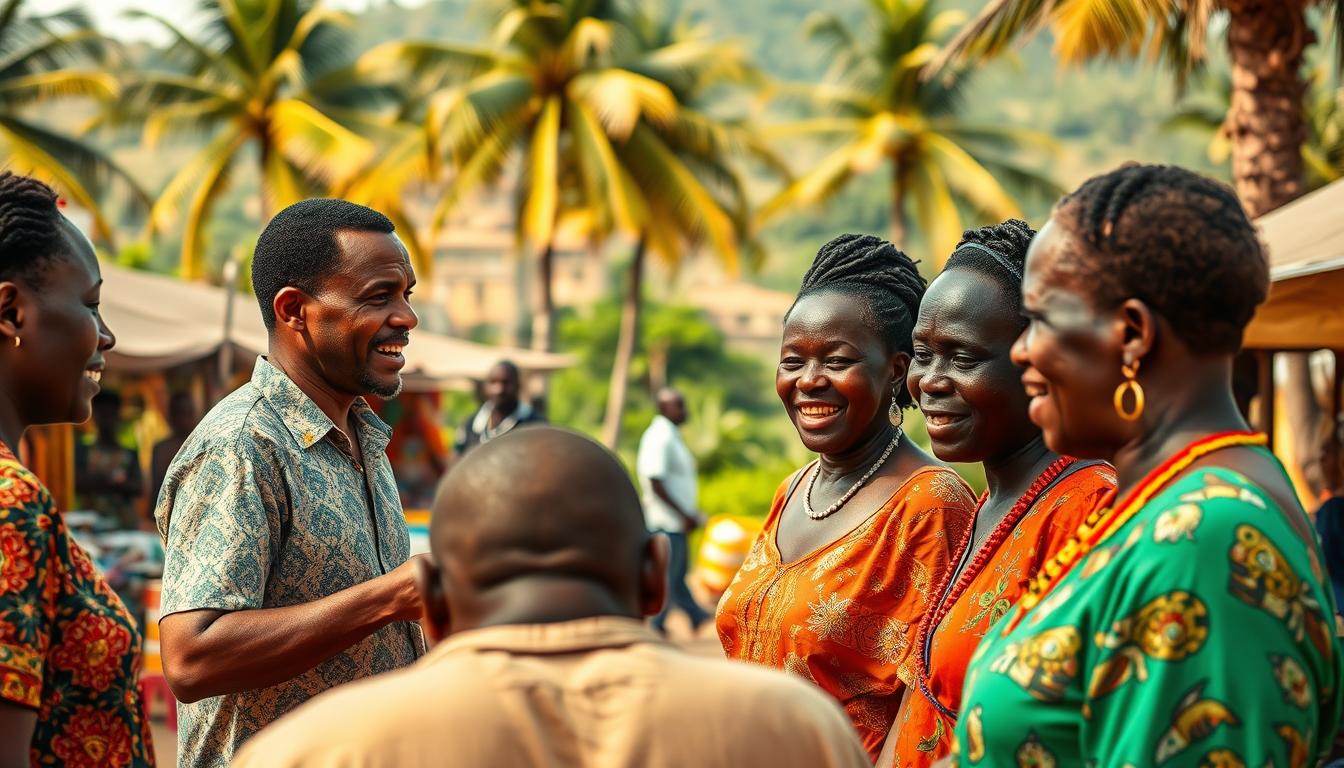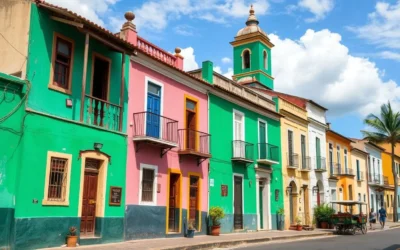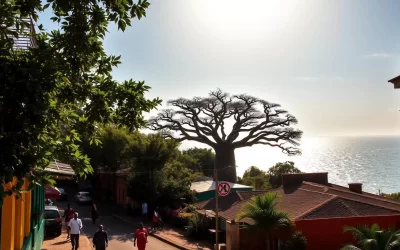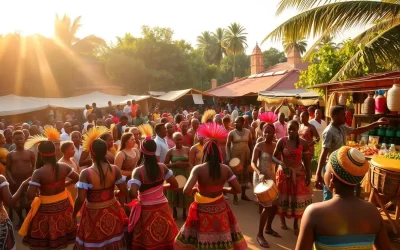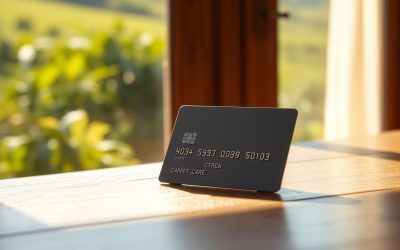Did you know that in Guinea-Bissau, only 11% of the population speaks the official language? This West African country is a melting pot of cultures, with a rich history shaped by kingdoms, colonial rule, and diverse ethnic groups.
Portuguese, the official language, is spoken by a minority, while Guinea-Bissau Creole serves as the lingua franca. This unique blend reflects the country’s vibrant heritage and its journey to independence in 1974.
Explore how language in Guinea-Bissau tells the story of its people, from the influence of the Kaabu and Mali empires to its modern-day cultural tapestry. Ready to dive in?
Introduction to Guinea-Bissau’s Linguistic Landscape
Discover the rich tapestry of languages that define this West African nation. The country is a cultural mosaic, where history and tradition intertwine to create a unique linguistic identity. From native dialects to colonial influences, every language tells a story.
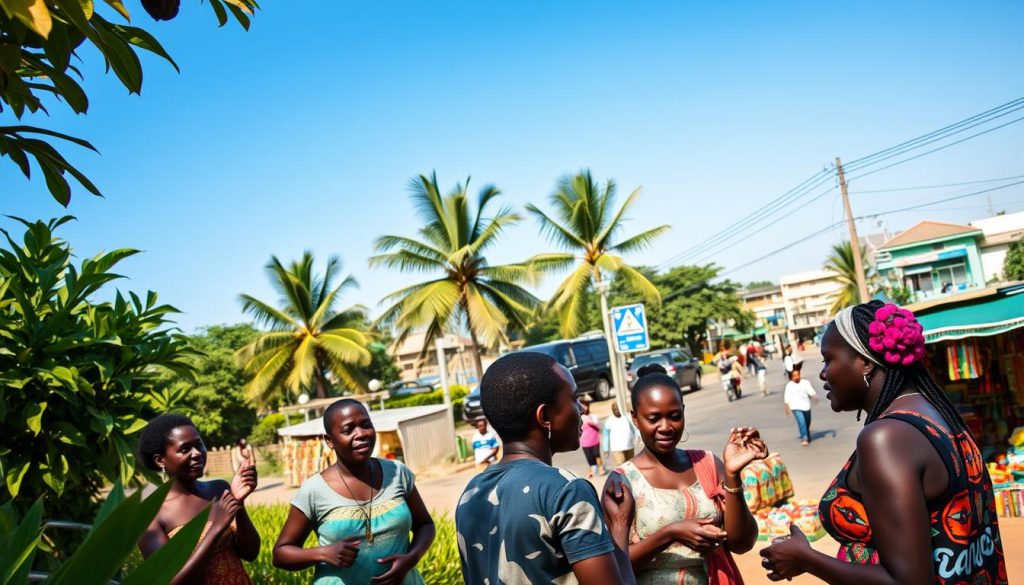
Setting the Scene: A Cultural Mosaic
Guinea-Bissau’s population is a blend of diverse ethnic groups, each contributing to the nation’s linguistic richness. The Balanta, Fula, and Mandinka communities, among others, bring their native tongues to the mix. This diversity reflects the country’s vibrant heritage and its deep-rooted traditions.
Understanding the Country’s Language History
The linguistic landscape of Guinea-Bissau is shaped by its multilayered past. Pre-colonial empires like the Kaabu laid the foundation for native dialects. Later, Portuguese rule introduced a new layer of influence. Today, this blend of history and culture continues to shape how people communicate across the region.
Historical Influences on Language Development
Languages in Guinea-Bissau tell a story of empires, colonization, and cultural resilience. The country’s linguistic landscape is a testament to its rich history, shaped by ancient kingdoms and colonial rule. Understanding this evolution helps you appreciate the diversity of communication today.
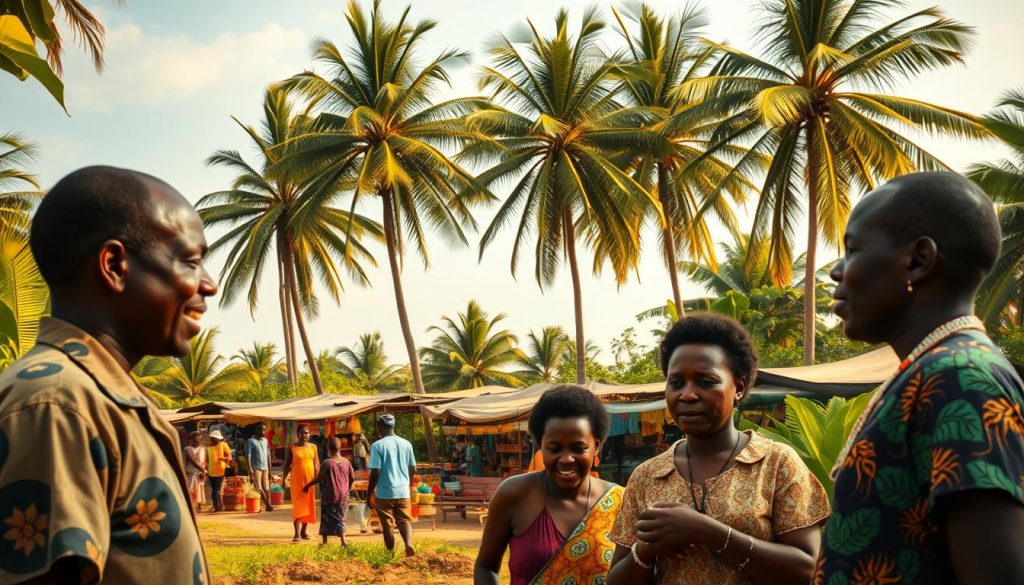
The Impact of the Kaabu and Mali Empires
Before European influence, the Kaabu and Mali Empires played a pivotal role in shaping local dialects. These empires, flourishing between the 13th and 19th centuries, introduced cultural and linguistic practices that still resonate today. Native groups like the Mandinka and Fula carried these traditions forward, creating a foundation for modern communication.
The Kaabu Empire, in particular, left a lasting legacy. Its influence extended across West Africa, fostering trade and cultural exchange. This period saw the development of unique dialects that blended regional and imperial elements. These early linguistic patterns laid the groundwork for the country’s diverse language groups.
Colonial Legacy and the Emergence of Portuguese
Portuguese colonization, beginning in the 15th century, introduced a new layer to the linguistic landscape. While the official language became Portuguese, its adoption was limited. Only a small percentage of the population spoke it fluently, primarily in urban centers and among the educated elite.
Despite its limited reach, Portuguese became a marker of governance and education. Colonial policies often restricted access to formal schooling, hindering widespread adoption. This created a linguistic divide, with native dialects remaining dominant in rural areas. Today, this colonial legacy continues to influence how languages are used in government and daily life.
“The history of language in Guinea-Bissau is a reflection of its people’s resilience and adaptability.”
| Historical Period | Key Influence | Impact on Language |
|---|---|---|
| Kaabu Empire (1537-1867) | Cultural and trade exchanges | Development of native dialects |
| Mali Empire (c. 1230-1600) | Regional dominance | Spread of Mandinka language |
| Portuguese Colonial Rule (1474-1974) | Introduction of Portuguese | Limited adoption as the official language |
These historical markers highlight how deep-rooted events shaped the country’s linguistic identity. From ancient empires to colonial rule, each era left its mark, creating a unique blend of languages that continues to evolve.
Guinea-Bissau: Official and widely spoken languages
In this West African nation, the role of language reveals a fascinating divide between formal and everyday communication. While Portuguese holds the status of the official language, it is spoken by a minority, primarily in urban areas. On the other hand, Guinea-Bissau Creole serves as the practical lingua franca, bridging diverse communities across the country.
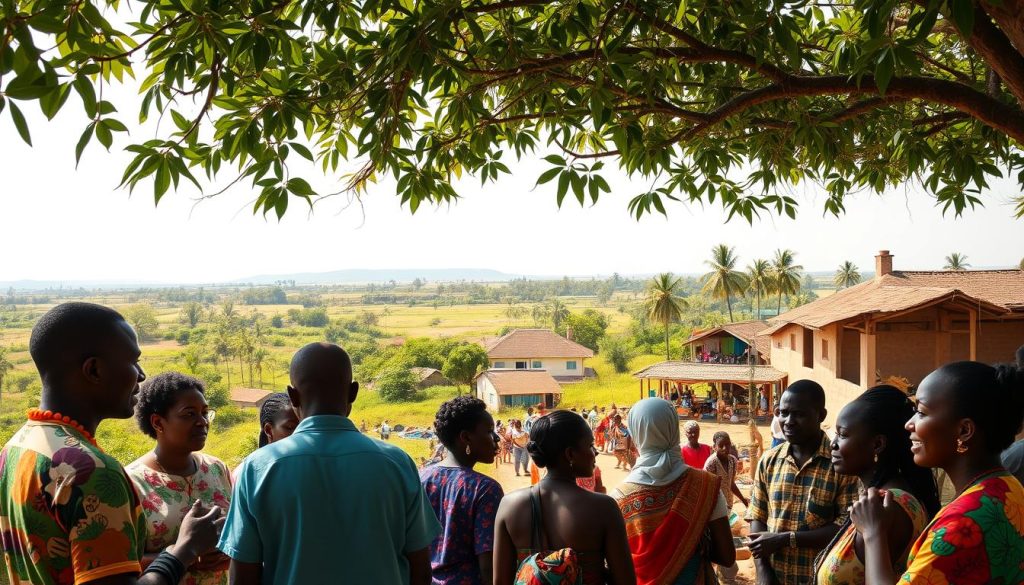
Portuguese in Government and Administration
Portuguese is the language of governance, used in official documents, public administration, and formal education. However, its reach is limited. Only an estimated 200,000 people, mostly in the capital city of Bissau, speak it fluently. This creates a gap between the elite, who often use Portuguese, and the broader population.
In parliament and public services, Portuguese is the medium of communication. Yet, its limited adoption highlights the challenges of accessibility. For many, it remains a symbol of education and privilege rather than a tool for everyday interaction.
The Pervasive Role of Guinea-Bissau Creole
Guinea-Bissau Creole, or Kriol, is the heartbeat of daily life. It is the language of trade, media, and informal communication. Unlike Portuguese, Creole is widely understood and spoken across the country, making it the true lingua franca.
In parliament, debates often switch between Portuguese and Creole, reflecting its cultural prominence. Media outlets also use Creole to connect with audiences, ensuring that information reaches everyone. This blend of formal and informal usage underscores its importance in shaping the nation’s identity.
| Context | Language Used | Purpose |
|---|---|---|
| Government | Portuguese | Formal communication |
| Parliament | Portuguese & Creole | Debates and discussions |
| Media | Creole | Public outreach |
| Daily Life | Creole | Informal communication |
This linguistic duality reflects the country’s unique blend of history and modernity. While Portuguese anchors formal systems, Creole connects people in their everyday lives. Together, they paint a vivid picture of Guinea-Bissau’s cultural richness.
Overview of Native Languages and Regional Dialects
Exploring the native languages of this region reveals a vibrant tapestry of traditions. Each language carries the stories of its people, reflecting their identity and heritage. From Balanta to Mandinka, these tongues are more than just communication tools—they are cultural treasures.
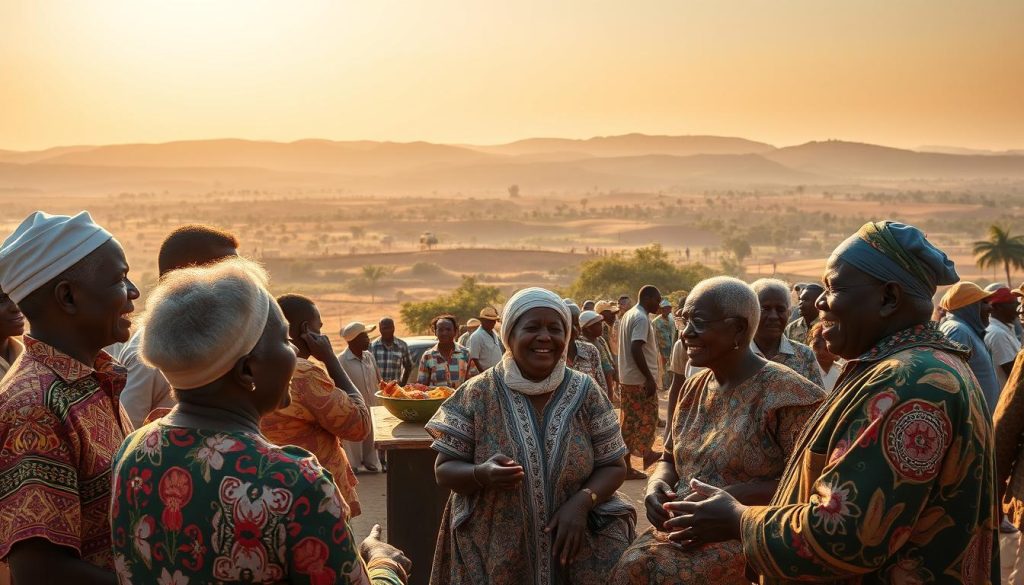
Major Languages: Balanta, Fula, Mandjak, Mandinka, and Papel
Balanta is one of the most widely spoken native languages, with around 510,000 speakers. It has several dialects, each tied to specific ethnic groups. These variations highlight the diversity within the Balanta community and their local traditions.
Fula, spoken by about 16.3% of the population, is another key language. It belongs to the Niger-Niger-Congo family, linking it to broader regional trends. Fula is often used in trade and cultural exchanges, making it a vital part of daily life.
Mandjak and Mandinka, with 11.3% and 10.8% speakers respectively, are also prominent. These languages are deeply rooted in the history of the country, reflecting the influence of ancient empires like Kaabu. Papel, spoken by roughly 8.8% of the population, adds another layer to this linguistic mosaic.
Each of these languages plays a unique role in shaping the cultural narrative. They connect people to their heritage and foster a sense of belonging within their group. Understanding these native tongues offers a window into the soul of this vibrant country.
Foreign Languages and Cross-Border Communication
In Guinea-Bissau, the presence of foreign languages highlights its global connections. French, in particular, plays a significant role in education and media. This reflects the country’s proximity to French-speaking neighbors and its membership in the International Organization of La Francophonie.
The Role of French in Education and Media
French is widely taught in schools across the country. It serves as a bridge to higher education and international opportunities. Many students learn French as a second language, making it a key part of the curriculum.
In media, French is often used alongside Portuguese and Creole. This multilingual approach ensures that content reaches a broader audience. News outlets and educational programs frequently incorporate French to connect with neighboring countries.
International Ties and Linguistic Exchange
Guinea-Bissau’s linguistic landscape is shaped by its international relationships. French facilitates cross-border communication with countries like Senegal and Mali. This exchange strengthens cultural and economic ties across the region.
Here’s how French influences daily life:
- It is a common language in trade and diplomacy.
- Many professionals use French to collaborate with international partners.
- Educational exchanges often rely on French as a medium of instruction.
This dynamic interplay between native and foreign languages enriches the country’s cultural identity. It also highlights the importance of multilingualism in a globalized world.
Languages in Education, Media, and Daily Life
Language plays a vital role in shaping education, media, and daily interactions in this West African nation. From classrooms to cultural events, it bridges communities and fosters connection. Let’s explore how it influences different aspects of life.
Language Use in Schools and Public Services
In schools, Portuguese is the primary medium of instruction. However, many students first learn in their native dialects. This creates a unique challenge for educators. Balancing formal education with cultural preservation is key.
Public services often rely on Portuguese for official communication. Yet, Creole is widely used to ensure accessibility. This dual approach helps bridge the gap between formal systems and the population’s needs.
Cultural Celebrations and Media Influence
Cultural events are a vibrant showcase of linguistic diversity. During festivals, native languages take center stage. They unite communities and celebrate heritage. From traditional songs to storytelling, language becomes a tool for connection.
Media outlets also play a crucial role. Creole dominates radio and television, making information accessible to all. Portuguese is reserved for formal broadcasts, while local dialects add a personal touch. This blend ensures everyone stays informed.
“Language is not just a means of communication; it’s the heartbeat of culture and identity.”
Here’s how language shapes daily life:
- In schools, students learn Portuguese but often speak Creole with peers.
- Public services use both formal and informal languages to serve the community.
- Media blends Creole and Portuguese to reach a wider audience.
This dynamic interplay highlights the importance of language in shaping identity and fostering unity. Whether in a classroom or at a festival, it remains a powerful force in this region.
Conclusion
The linguistic identity of this West African nation is a reflection of its rich history and cultural diversity. From the colonial influence of Portuguese to the widespread use of Creole, the country’s language landscape tells a story of resilience and adaptation.
Historical events, such as the Kaabu Empire and Portuguese rule, have left a lasting impact. These influences shaped the native dialects and introduced new layers to the population’s communication. Today, this blend of colonial and native tongues defines the nation’s identity.
In government and education, Portuguese remains the formal language, while Creole connects people in their daily lives. This duality highlights the practical role of language in fostering unity and preserving heritage. Understanding these linguistic nuances offers a window into the soul of this vibrant country.
The above is subject to change.
Check back often to TRAVEL.COM for the latest travel tips and deals.
